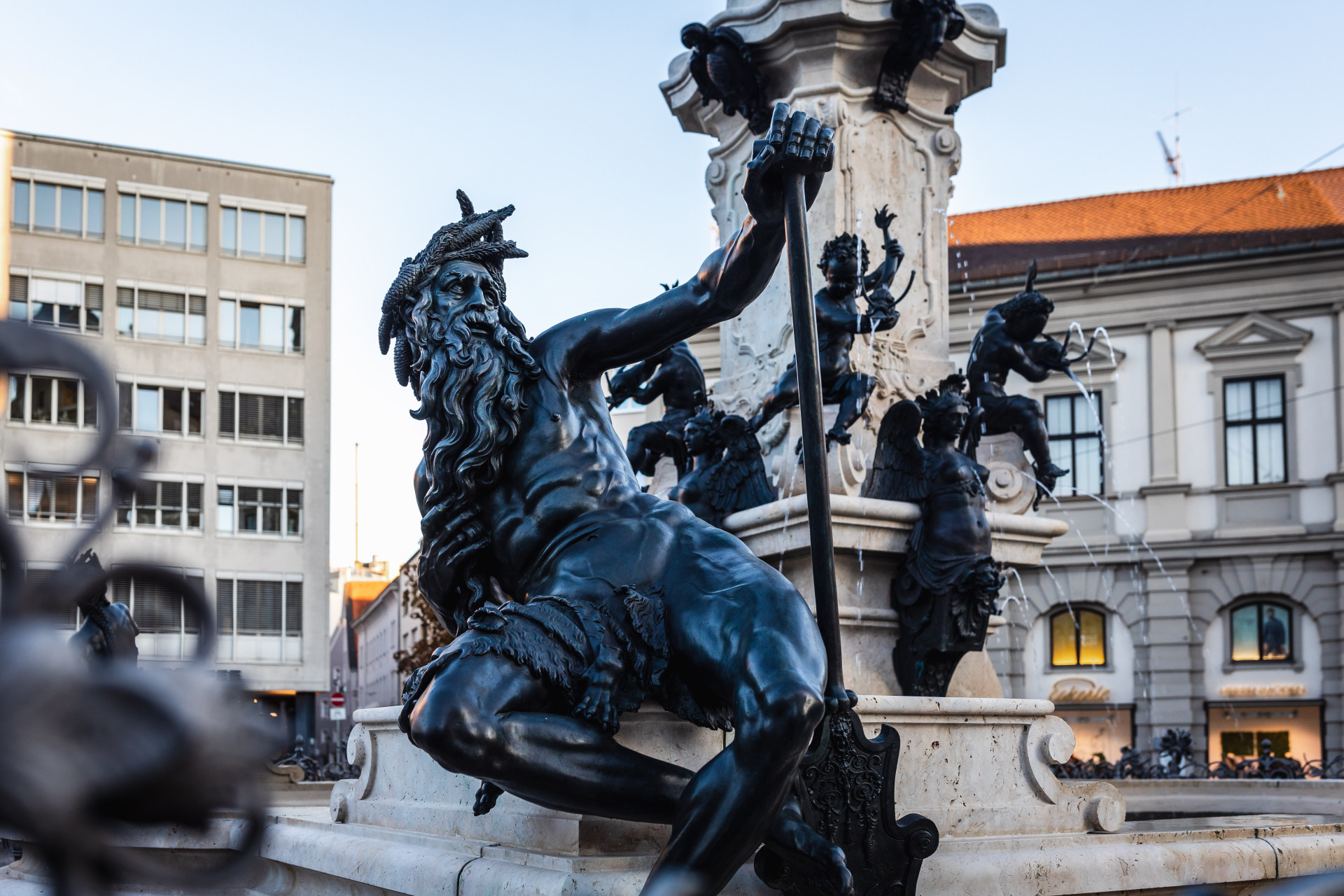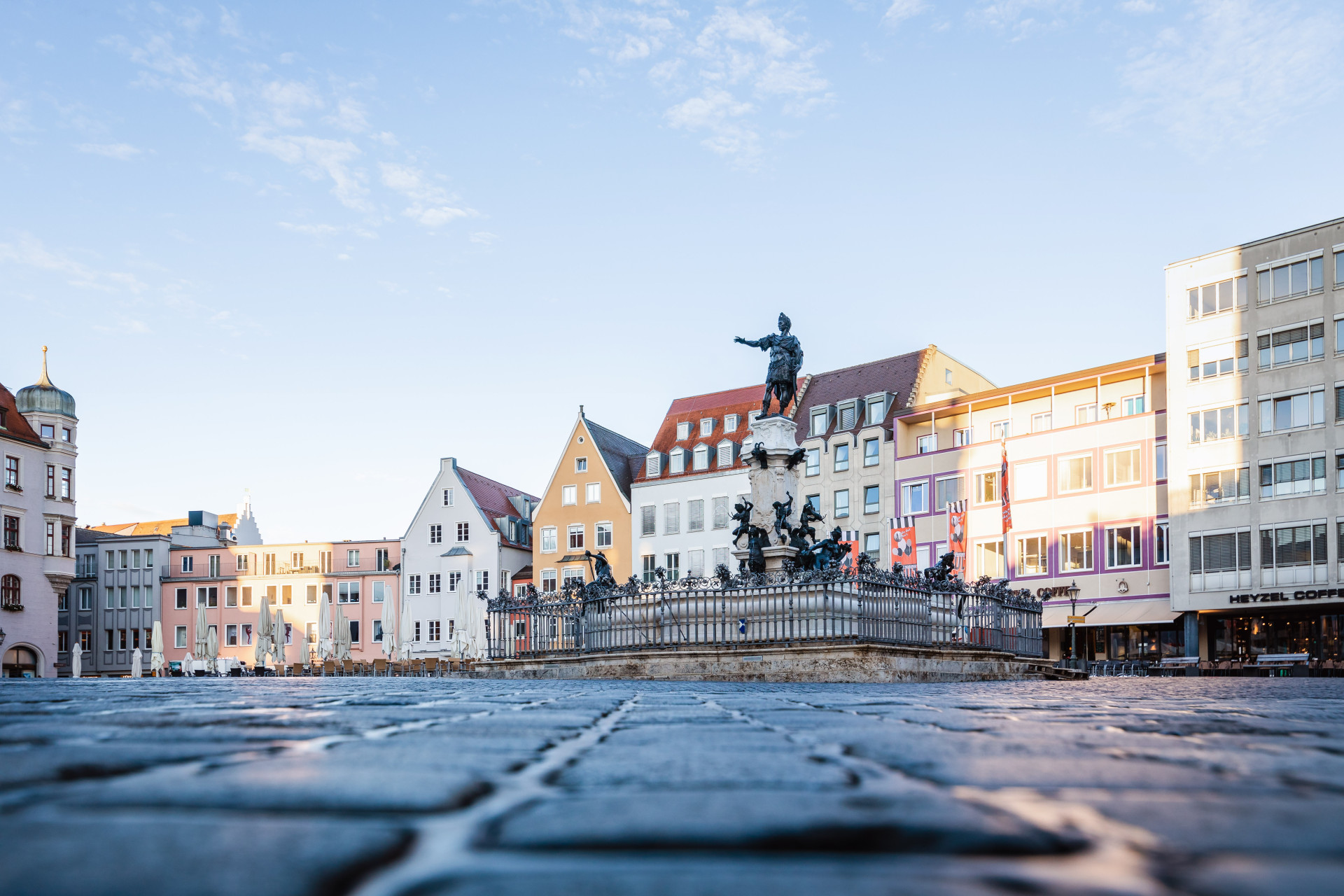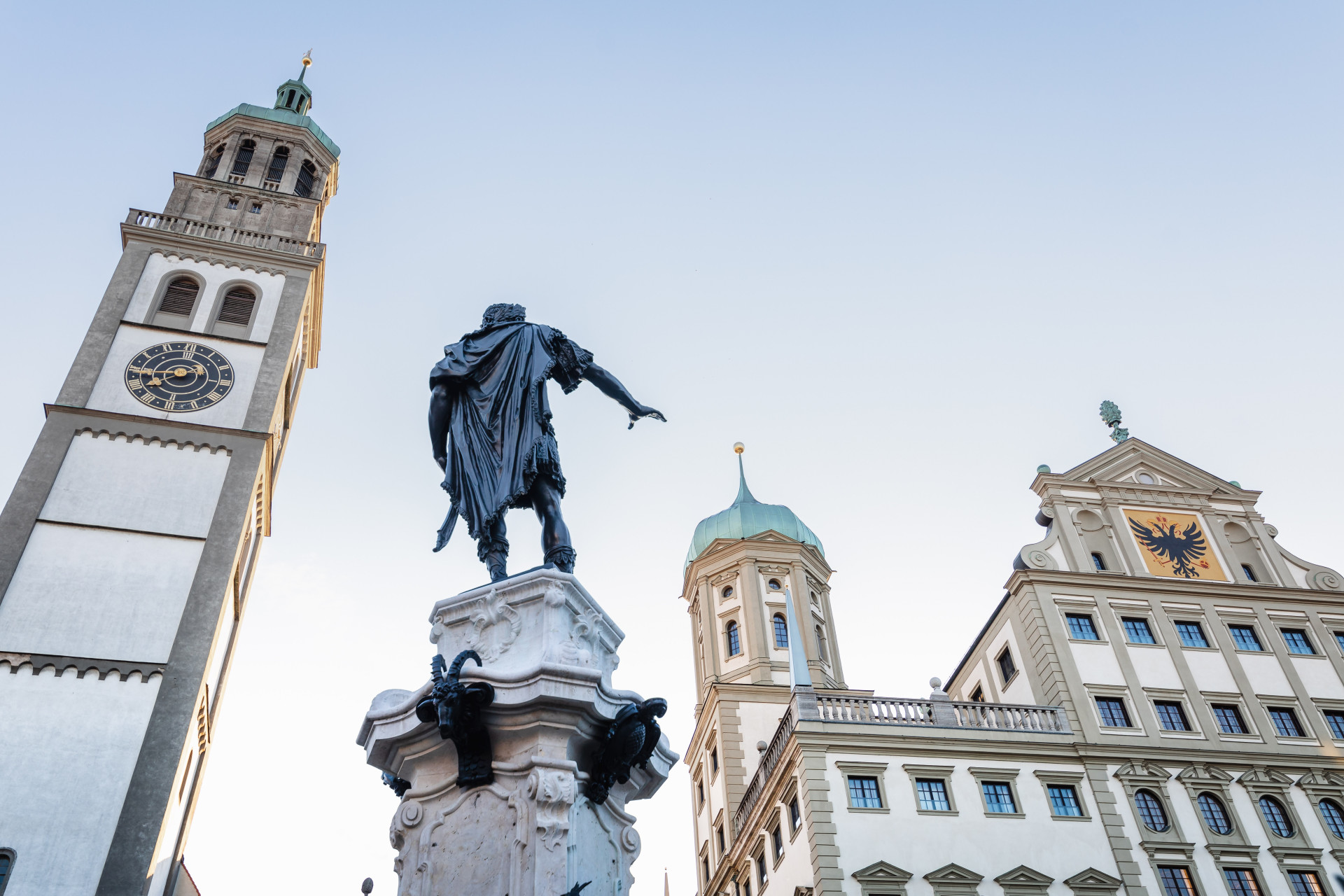
7
Augustus Fountain
The three monumental fountains with bronze figures are the artistic highlight of the water system. The first was created by Hubert Gerhard in 1594, with the city's founder Augustus standing in the middle as the emperor of peace. The four river gods symbolize Augsburg's main bodies of water: Lech, Wertach and Singold as well as the Brunnenbach, which was artificially created for drinking water.
Building history and description
- Monumental fountain in the style of late Mannerism
- marble pillars
- bronze figures
- wrought-iron fountain with spiral vines and spindle flowers (1594)
- orientation to Giambologna
- so-called "Laufbrunnen" (running fountain)
- showpiece from the beginning
- Augsburg, city center, Town Hall Square
- Origin 1589-1594
- fountain pillar renewed 1749 in the Rokokodekor
- basin and pillar 1948-1950 replaced by copies
- renovation of the bronzes 1992-2000, original figure of the Augustus in the Maximilianmuseum
- Sculptor Hubert Gerhard, foundry Peter Wagner, blacksmith (of the well grid) Georg Scheff
- about 2.5m high bronze figure of Augustus on fountain pillars
- bronze hermen and erotics on fountain pillars
- four life-size, bronze deities of water on the edge of the fountain (two male, two female: personifications of Lech, Wertach, Singold and Brunnenbach)
- four fire-gilded inscription panels on a marble pedestal (dedicated to Augustus, Rudolf II and Johannes Welser)
Use and purpose
- Augustus as historical ruler, city founder and "peace emperor" (by adlocutio gesture, calling for harmony in the biconfessional age), at the same time connectedness from Augsburg to the Habsburg emperors
- Glorification of the most important Augsburger waters, complemented by iconographic symbols of fertility, prosperity and abundance
- elaborate combination of image program and composition, artwork of European rank in the political center of the Renaissance city, but also a document of a precarious and unique situation in Augsburg of the late 16th century
- pioneering technology and cultural transfer of the Italian manner by Hubert Gerhardt (for example, public colossal sculpture, placement of figures on the edge of the fountain and basin shape innovative for southern Germany)
- so-called "Prachtbrunnen" or grand fountain as forerunner of the extensive "urban program" of the city Augsburg around 1600 as well as artistically high-quality representation of the water system
- worldwide unique trias of monumental fountains forms a unity
- water was supplied through the box tower of the waterworks at the Red Gate
Authenticity and unique features
- Fountain bronzes in their best condition, original bronzes due to environmental threats and vandalism today museum exhibits (but this does not contradict the UNESCO requirement of authenticity)
- Regular care by the city of Augsburg
- winter protection cover
- Manneristic artwork of European renown, Triassic splendor fountain in this form unique in the world
- Glorification of the water through very expensive material Bronze illustrates the significance of the water system for Augsburg





